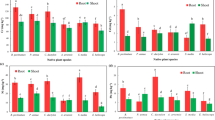Abstract
This study was conducted to assess the potential of Bangkoksewage sludge for amendment of saline and acidic soil withrespect to heavy metal mobilization. Experiments were carriedout at six levels of salinity (with electrical conductivityvalues of 2, 4, 8, 19, 31 and 42 dS m-1) and two levels ofacidity (with pH values of 5 and 6). A pure sludge sample was used as a control system. Subsamples were collected andanalyzed for total and bioavailable heavy metals. Three sets ofsoil-sludge mixture were prepared using different weight ratio(1:1, 4:1 and 10:1) to simulate the conditions in the field withsludge-amended soil. Samples of soil-sludge mixture were incubated for 4 weeks to stabilize organic substances. Themobility and concentration of bioavailable heavy metal invarying soil-sludge mixture ratio with different electricalconductivity (EC) values were evaluated with the use of DTPA(diethylenetriamine pentaacetric acid) extraction techniques.Pure saline soil sample from Sakhon Nakhon (North-eastern partof Thailand) was used of salt-heavy metal interactions on thegermination percentage in soil mixed with sludge and to screencrops or varieties for their tolerances to soil salinity. Seventypes of seeds – mung bean, corn, soybean, tomato, stringbean, sunflower and marigol – were planted in each of the threesoil-sludge mixtures (1:1, 4:1 and 10:1) with different salinitylevels. Seedlings were monitored by counting the number of seeds thatare germinated and seed germination percentage can be used as anindicator for the level of salinity unsuitable for plant growth.
Similar content being viewed by others
References
Adriano, D. C.: 1992, Biogeochemistry of Trace Metals, Lewis Publisher, Baton Rouge, FL, pp. 109–158.
Alloway, B. J.: 1995, 'Heavy Metals in Soils', published by Blackie Academic and Professional, Glasgow, U.K., 50 pp.
Bohn, H., McNeal, B. and O'Conner, G.: 1979, Soil Chemistry, Wiley Interscience, New York, NY.
Cottenie, A., Verloo, M., Kienkens, L., Vellghe, G. and Camerlynch, R.: 1982, Chemical Analysis of Plants and Soils, Laboratory of Analytical and Argrochemistry, State University, Ghent, Belgium.
De Glopper, R. J.: 1971, Preliminary Report on Tidal Land Reclamation in Thailand, Land Development Dept. Bangkok, Thailand, 22 pp.
Evans: 1991, 'The Influence of pH and Chloride on the Retention of Zinc, Lead Cadmium and Mercuty by Soil', in Proc. Technology Transfer Conf. The Multi-Media Approach: Integrated Environmental Protection, Vol. 1, Environment, Canada, Toronto, pp. 123–130.
FAO: 1988, 'Salt-Affected Soils and their Management', FAO Soils Bulletin 39, Food and Agriculture Organization of the United Nations, Rome, 6 pp.
Kuiper, P. J. C.: 1984, 'Salinity Tolerance in Plants: Functioning of Plant Cell membranes under Saline Conditions', Membrane Lipid Composition and Atpases, 77 pp.
Lake, D. L., Kirk, P. W. W. and Lester, J. N.: 1984, 'Fractionation, Characterization and Sludge-amended Soil, A Review', J. Qual. 13, 175–183.
McGill, W. B. and Fiqueiredo, C. T.: 1993, Total Nitrogen: Soil Sampling and Method of Analysis, Lewis Publishers, U.S.A.
O'Halloran, I. P.: 1993, Phosphorus: Soil Sampling and Method of Analysis, Lewis Publishers, U.S.A.
Ponnamperuna, F. N.: 1977, 'Soil-related Conditions to Food Production in the Tropics', in Soil Salinity as a Constraint on Food Production in the Humid Tropics, Land Development Dept. Bangkok, pp. 213.
Ramage, R. T.: 1980, 'Genetic Methods to Breed Salt Tolerance in Plants', in D. W. Rains, R. C. Vallentine and A. Hollanender (eds), Genetic Engineering of Osmoregulation: Impact on Plant Productivity for Food, Chemicals and Energy, Plenum Press, New York, pp. 311–318.
Rimwanich, S. and Suesiri, B.: 1976, 'Nature Management of Problem Soils in Thailand', Land Development Dept. Bangkok, Thailand, 13 pp.
Ross, S. M.: 1994, Toxic Metals in Soil-Plant Systems, John Wiley & Sons, 126 pp.
Sauerbeck, D. R.: 1991, 'Plant Element and Soil Properties Governing Plant, Uptake and Availability of Heavy Metals Derived from Sewage Sludge', Water, Air, and Soil Pollut. 57, 277.
Shuman, L. M.: 1991, 'Chemical Forces of Micronutrients in Soils', in J. J. Montvedt et al.(eds), Micronutrients in Agriculture, ASA, CCSA and SSSA, Madison, WI, pp. 113–144.
Smith, S. R.: 1996, Agricultural Recycling of Sewage Sludge and the Environment, Wallingford, U.K., Cab International.
Soon, Y. K. and Abboud, S.: 1993, Total Heavy Metals: Soil Sampling and Method of Analysis, Lewis Publishers, U.S.
Srivastava, S. K.: 1989, 'Studied on the Removal of Some Toxic Metal Ions part II: Removal of Lead and Cadmium by Montmorillonite and Kaolinite', Environ. Technol. Lett. 10, 275–282.
US EPA: 1989, Environmental Regulations and Technology: Control of Pathogens in Municipal Wastewater Sludge for Land Application, under 40 CFR part 257; EPA pub. No. EPA-625/ 1089/006, Cincinnati, Ohio, U.S.A.
Author information
Authors and Affiliations
Corresponding author
Rights and permissions
About this article
Cite this article
Parkpian, P., Leong, S.T., Laortanakul, P. et al. Influence of Salinity and Acidity on Bioavailability of Sludge-Borne Heavy Metals. A Case Study of Bangkok Municipal Sludge. Water, Air, & Soil Pollution 139, 43–60 (2002). https://doi.org/10.1023/A:1015853021325
Issue Date:
DOI: https://doi.org/10.1023/A:1015853021325




